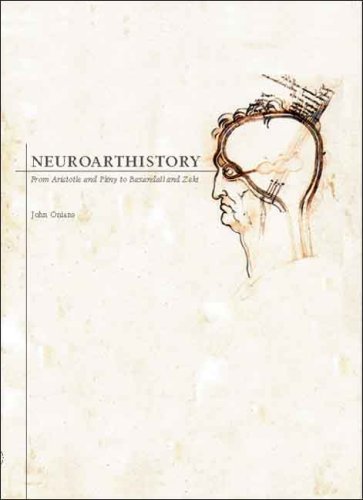Coining of the term Neuroarthistory
On the other hand, there is “neuroarthistory” (Onians 2008a). The book that launched this barbarous term was advertised as “a fascinating account” of “one of the newest and most exciting fields in the human sciences,” and its author was praised by his university for “cracking the real Da Vinci code.”
He did that thanks to the concept of neuroplasticity, which allegedly opens the way to explaining why art looks the way it does. This, it is claimed, will for the first time in art history allow access to artists’ minds. For example: the animals painted in the Chauvet-Pont-d’Arc Cave look so “strikingly naturalistic” (a questionable assertion) because paleolithic humans watched them so intently; the neural networks of a contemporary Australian bark painter were particularly attuned to parallel lines because as a child he admired his father’s expertise in using fibers to make fish traps and was later exposed to parallel lines through op art; a similar reasoning explains why Florentine Renaissance artists made more use of lines, while Venetians, more use of color. In such a perspective, the answer to the question “What might neuroarthistory add to the discussion of Duchamp?” is that the objects Duchamp used in his readymades
had become so familiar as valuable devices that viewers would necessarily have enjoyed seeing them. They might not have placed them in the category of art, but the response they evoked was one at the centre of artistic experience, an unconscious pleasure, a pleasure enhanced by the additional references associated with title and text and context. It was such a neurally-based response that Duchamp unconsciously exploited. (Onians 2008b)

Summary of the book
This provocative book offers a fascinating account of neuroarthistory, one of the newest and most exciting fields in the human sciences. In recent decades there has been a dramatic increase in our knowledge of the visual brain. Knowledge of phenomena such as neural plasticity and neural mirroring is making it possible to answer with a new level of precision some of the most challenging questions about both the creative process and the response to art.
Exploring the writings of major thinkers (among them Montesquieu, Burke, Kant, Marx and Freud), and leading art historians (including Pliny, Winckelmann, Ruskin, Pater, Gombrich and Baxandall), as well as artists such as Alberti and Leonardo and scientists from Aristotle to Zeki, John Onians shows how an understanding of the neural basis of the mind contributes to an understanding of all human behaviors—including art.
Below, you can find an interview with the author, as well as a video of him explaining neuroarthistory.


















0 comments
Sign in or create a free account